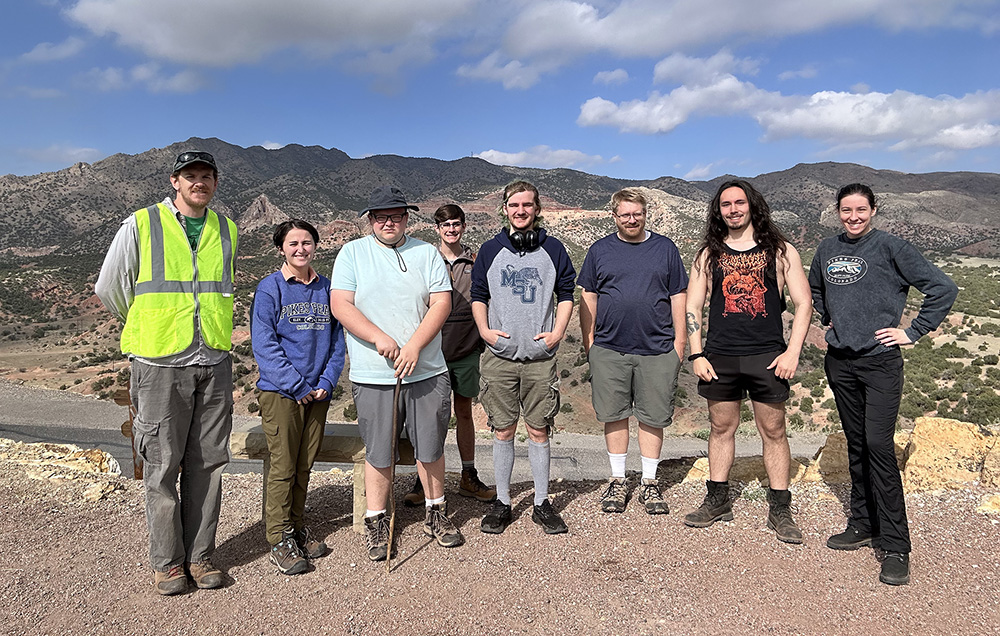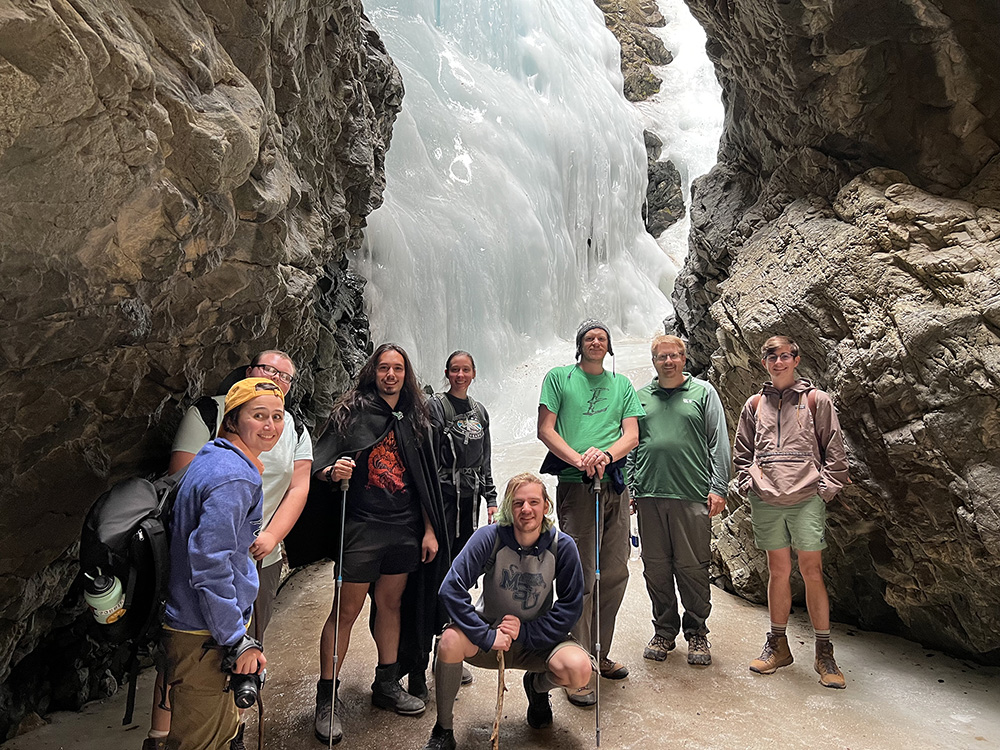They saw flood basalts created by ancient lava flows and a dinosaur trackway in New Mexico. They experienced the Garden of the Gods and the Great Sand Dunes in Colorado. They spent six days together in a van. They grew closer. They returned home with memories for a lifetime.
It’s a story that’s been playing out for more than 30 years in the Arkansas Tech University geology program. Each summer, an adventurous group of ATU geology majors sets out on a co-curricular journey that reinforces classroom learning and sparks wonder in fertile minds with the potential to make new discoveries.
“This type of adventure we get to go on in the summer and the fact it is sponsored by the university is very appealing,” said Ollie Smith, a 2023 ATU geology graduate who made the trip after her junior and senior years. “It’s something you probably wouldn’t ever get to do again. I was lucky enough to go twice, and I had a fantastic time both times. It’s something I’ll remember and think back on for the rest of my life.
“You make connections with your fellow students, with the professors and you get to see the more human side of everybody,” continued Smith. “We got to hang out in Colorado and New Mexico and camp at these places I never thought I would see. I think it’s a great thing for future students to be involved in. It’s important for the geology program. It was a big part of what drew me in. Students enjoy having that opportunity and we feel very lucky to be able to do that.”
On May 7, 2023, Dr. Jacob Grosskopf, Dr. Jacob Siebach and a hardy band of six ATU students pointed their van west and departed from Russellville. Over the course of six days, they hiked around the rim of an extinct volcano crater, saw evidence of the extinction of the dinosaurs and awoke to the playing of “Reveille” outside Fort Carson, Colo.
“The major premise is to see and interact with geology we can’t see in our immediate area in Arkansas,” said Grosskopf, associate professor of geology and a member of the ATU faculty since 2016. “Most of our courses go on trips that are 1-to-4 hours away from us, but this gets us to a whole other set of geologic features. The main ones are dormant volcanoes and rocks that are different ages than we have in Arkansas. One example would be igneous rocks we saw that were over a billion years old.”
They explored tilted and red sedimentary rocks, saw Pike’s Peak and collected large quartz, tourmaline, mica and potassium feldspar crystals at Royal Gorge.
“In a couple of ways, this is a very powerful experience for the students,” said Grosskopf. “It has them re-investigate what we learned in the classroom out in the field in an unknown, unfamiliar area. That’s good for reinforcing the ideas we try to get across to students and the models we try to teach students to show them how the world works. To do that in a group setting where you are with people 24 hours a day, you are bound to bounce ideas back and forth with your classmates and to ask questions openly to professors. We open up the door for that atmosphere to take place.”
They set up camp near the Great Sand Dunes and hiked to a frozen waterfall at Zapata Falls.
When they awoke the next morning, they were greeted by snow.
“I’ve been out there probably six other times, and this was the earliest time in the summer I’ve been out there,” said Grosskopf. “We had snow that night, and then the next day (the Great Sand Dunes) were capped in snow. I’ve never seen that before. The fact that it happened that far into summer and that it stayed was a pretty interesting weather event.”
The group returned to New Mexico to view the Rio Grande Rift and the Bandelier National Monument, which provided evidence of cliff dwellings and a lesson in how humans have interacted with geology over time.
“It was fun to get that freedom of going out there, seeing the things you wanted to see and having the professors right there to ask the questions you wanted to ask without the added stress of the classroom,” said Smith. “It was a more adventurous type of feeling. There was no stress about asking the wrong question and the little things you get caught up in as a student.”
After one last stop in Taos, N.M., the ATU group packed the van for the final time and returned home to Arkansas.
“It definitely gives you a common experience to talk about for the rest of your lives,” said Smith. “We know what we’re getting into. You’re going to be camping, and you won’t always get the best night’s sleep. That brings some bonding. The parts you don’t like will sometimes bond you even more. If you go through little hardships together, you figure out you can lean on each other and trust each other.”
Smith completed an internship with the U.S. Geological Survey in Colorado during fall 2023 and will begin graduate study in spring 2024. She has big dreams of conducting research in Iceland and Scotland. Those dreams feel more within her grasp after the experiences afforded to her by the ATU geology summer trip.
“It made me more confident in my understanding of the field,” said Smith. “I found that one of my stronger points is actually being out in the field, seeing features and identifying them. It’s the most fun for me, and for the most part I find that I’ve retained the information I need to. I’ve built confidence from that. I just need to trust my gut.”
ATU alumni and friends with an interest in providing financial support for experiential learning opportunities are invited to contact the ATU Office of Development at (479) 968-0400.







